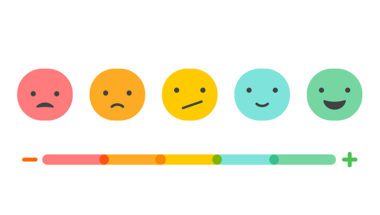Welcome to the fourth blog post of our six-part blog/workshop series on Social and Emotional Learning (SEL) for grades K–12. One of the most trusted sources for knowledge about high-quality, evidence-based social and emotional learning is The Collaborative for Academic, Social, and Emotional Learning (CASEL). This post will focus on CASEL’s SEL competency Social Awareness and will include real-life examples and engaging strategies to be used in the classroom and online.
We’ve offered numerous SEL strategies throughout our blogs to provide you with a menu of options. We suggest picking one strategy at a time and know that you’ll have several options to choose from during the course of the school year. Don’t feel like you have to do all the strategies at once. We are here to support you, not overwhelm you. We know you do not need one more thing on your plate. The good news is:
“SEL is not one more thing on your plate; it is the plate.”—Dr. Amy Cranston
SEL can take place everywhere: school, online, and at home! At school, educators can embed SEL into academic content and instructional practices or teach SEL as a stand-alone lesson. SEL can also be developed through social experiences at recess, lunch, in the hallway, and after-school programs. The frequency of SEL practices contributes to the culture of safety, inclusion, and belonging.
For example you can have a stand-alone lesson or a teachable moment:


Or
“How do you think that person felt?”
The foundation of social awareness is self-awareness. It starts with US. The more we understand ourselves, the better we are at understanding and empathizing with others. If you missed our blog on self-awareness you can check it out here.
| Competency | Skills We Need Now |
| SOCIAL AWARENESS: The ability to take the perspective of and empathize with others, including those from diverse backgrounds and cultures; to understand social and ethical norms for behavior; and to recognize family, school, and community resources and supports. | Social awareness allows us to understand the broader historical and social contexts around the inequities exacerbated by COVID-19 and ongoing individual and institutional impacts of systemic racism. |
* CASEL, 2020
Empathy


Empathy is the understanding of or the ability to identify with another person’s feelings or experiences. While it’s not possible to perfectly inhabit another person’s experience, there is great value in being able to look beyond your own point of view. It’s worth noting that empathizing with someone and seeing their point of view does not necessarily mean you agree with them. Contrary to what we may see on social media, we have the capacity to respectfully disagree with someone. Studies show that when young people have empathy, they display:
- Higher academic achievement
- Better communication skills
- Lower likelihood of bullying
- Less aggressive behaviors and emotional disorders
- More positive relationships
Here are several ways we can develop empathy with our students.
Model Empathy
It’s important that students understand what empathy looks and sounds like. It is especially helpful to verbally articulate your thought process when modeling empathy. For younger students, it’s especially helpful when teachers model empathy using stories, characters, and their own reaction to those characters. For example, a teacher could say:
Pooh seemed upset when Tigger took his honey. I wonder how I would feel if someone took my honey? You know what, I wonder what Tigger was thinking or feeling? Why do you think Tigger took the honey?
Explicitly Teach Empathy


Provide explicit instruction about what empathy is and how it benefits students. Discuss the importance of having empathy for individuals who are different from you. The more real-world connections that we can make for students, the more motivated they will be. Ask students to reflect on an experience where they reacted empathetically to situations or may have received an empathetic response.
While the ability to empathize may come more naturally to some students, it’s a skill that everyone can develop and improve over the course of their lives. Research shows that we all vary in how much we experience empathy. You and your students (depending on the grade level) can take this Empathy Quiz to see how empathetic you are and where you can strengthen your skills.
Praise Empathy
Validate and praise students who demonstrate empathy! Make the praise specific and meaningful.
For example:
You saw Dante wasn’t feeling well,and you asked if there was anything you could do to help him out today. That was very empathetic of you.
You saw Adrian was having a hard time finishing the assignment. You shared it was hard for you, too, and asked if there was anything you could do to help. That was very empathetic of you.
The more students experience empathy, the more likely they are to offer it to others.
Ask for Feedback


“If we’re not asking them what they need, we’re not giving them what they need.” —Dena Simmons
Here’s a great video to share with students on empathy in addition to various resources for grades K–12.
Introduction to Empathy for Elementary School Students
Developing Empathy Lesson for Middle School Students
Showing Empathy Lesson for High School Students
Reflection to Build Empathy
“We do not learn from experience…we learn from reflection on experience.”—John Dewey


My mentor teacher always said that finishing a lesson without reflection was like working on a term paper on your computer and closing it without clicking “save.” And, she was right.
Having students reflect on personal situations and evaluate how empathetic their responses were is a strategy for building empathy. Once students have reflected on past experiences, you can bridge them into using empathy in the present.
During a disagreement, have your students start to ask themselves:
How would I feel in the other person’s position?
What is his/her/their perspective?
Do I actually understand the other person’s perspective or am I more concerned with him/her/them understanding mine?
Empathy Increases Connection


Social awareness entails acknowledging the persistent inequities in education. These inequities may be rooted in race/ethnicity, sexual orientation, social class, home language, etc. They undermine opportunities to learn in deep and meaningful ways (CASEL playbook). SEL is about connection, and empathy can be a powerful tool to connect with our students across culture and race. A story about this comes to mind:
I remember one professional development session when we were discussing the importance of pronouncing a student’s name correctly. A student’s name, like their home language and home culture, is essential to their identity.
One educator raised his hand and said, “Yeah, but a lot of my students have ‘made-up’ names.”
Think about that statement for a moment. What did he mean by “made-up names”?
We proceeded to have an in-depth conversation to look at what was blocking this teacher from learning a student’s name. What he first realized was that regardless of the name, all names are essentially “made-up”. What he then realized was his challenge was not that the names were “made up,” it’s that they were culturally unfamiliar to him.
It turns out, he was fully capable of remembering or pronouncing new words (he was an English teacher after all). His students’ names were not too difficult for him to learn; they were merely different. This is an example where a teacher’s unconscious bias (or preference for certain names over others) created a disconnect from his students.
As a student, how would you feel if your teacher didn’t learn your name?
*We want to acknowledge that this was likely a reality for some of our readers.
Just as we want students to be able to empathize with people from other backgrounds, we (adults) need to be able to empathize with students from other backgrounds. One way of doing that is to “walk a mile in their shoes.” One way of doing that is to become a “perspective detective.”
Check out this empathy strategy.

Recognizing Support and Resources
Recognizing family, school, and community resources is a lifelong skill to develop. When we can support students to identify resources and supports, they are more likely to get the help they need more quickly and with more ease. Just imagine for a moment, if you were facing a challenge in your life, how asking yourself these questions would help:
Who in my family might support me with this?
What resources are available at school?
What kind of community office, department, or organization is able to help or maybe point me in the right direction?
Think of all the energy you would save not doing it all on your own! The value of recognizing resources and supports is threefold: 1) you’re experiencing success in resolving a problem; 2) you’re demonstrating for others how they can effectively use resources and 3) you’re able to become a resource to others by having gone through the process of seeking out resources.
One strategy to bolster recognizing supports and resources is a class community service project. As a class, select an organization or cause to support in the community. Here is an article that offers suggestions on collecting things, doing things, teaching things, hosting things, making things, or volunteering time to serve a community.
Systemic Racism


You’ve probably heard the term systemic racism in many contexts recently. Systemic racism refers to the systems in place that create and maintain racial inequality in nearly every facet of life for people of color (Yancey-Bragg, 2020). It’s called “systemic” racism because it’s ingrained in the policies and practices at institutions like banks, schools, companies, government agencies, and law enforcement (Gal, Kiersz, et al., 2020). Systemic racism is hard for people to grasp because it’s all around us and doesn’t have a face. As a result, it can be very difficult for some people to see all of the ways in which systemic racism impacts the daily lives, for better or worse, of people in our country.
To illustrate systemic racism and its impact on schools, let’s take the example of redlining. Redlining is a discriminatory practice that puts services (financial and otherwise) out of reach for residents of certain areas based on race or ethnicity. It can be seen in the systematic denial of mortgages, insurance, loans, and other financial services based on location rather than on an individual’s qualifications. The term redlining was coined because banks would use red ink on a map to outline parts of cities they deemed as having an undesirable population to lend to (most notably minority neighborhoods). Loans in these neighborhoods were unavailable or very expensive, making it more difficult for low-income minorities to buy homes. Consequently, many communities missed out on decades of homeownership, which is one of the top contributors to accumulating wealth in the U.S. Not reaping these benefits has also contributed to the country’s persistent racial wealth gap. While the Fair Housing Act of 1968 put an end to legally sanctioned redlining policies, we currently see new forms of redlining in predatory lending (especially during the 2008 housing crisis) and institutions outside the mortgage industry.
Okay, I get redlining. So, how does it impact schools?
Good question. Education funding is tied to property taxes and, in extension, the value of the housing in a neighborhood. So, redlining has contributed to the amount of funding (or lack of funding) a public school will receive in the U.S.
Redlining is just one example of how a racist policy can impact our students of color. These racial inequities and disparities appear in every sector of private and public life including education, politics, health care, criminal justice, income, employment, and home ownership. For those of you who prefer data or charts, you can check out this resource to understand the impact of racism in the U.S. At the end of the day:
SEL is most effective when stakeholders understand the effects that systemic racism have on their students of color, their families, and their communities.
If you’d like to continue to explore the ways in which systemic racism impacts our students and communities, we’ve curated some resources for you below. As you read, we encourage you to reflect on ways certain policies have impacted your own life as well.
Additional Resources
6 Ways to Be an Antiracist Educator
If We Aren’t Addressing Racism, We Aren’t Addressing Trauma
Without Context Social-Emotional Learning Can Backfire
Putting in the Work to Be Antiracist
Documentaries & Podcasts
PBS: African Americans: Many Rivers to Cross
Netflix Documentary: 13th
This American Life (NPR) Podcast: The Problem We All Live With
NPR Podcast Life Kit: Talking Race with Young Children
See also:
The first three chapters of this series:
- Introduction to Social and Emotional Learning
- SEL & Beyond: Self-Awareness
- SEL & Beyond: Self-Management
The next chapters in this series:
SEL & Beyond: A Dynamic Introduction to Social and Emotional Learning and Its Core Competencies
Join SEL experts Trisha DiFazio and Allison Roeser for a free, 6-part SEL workshop!
Infobase’s SEL Packages for All Levels: Instant Trial Access
Access content supporting the five competencies of social and emotional learning.
About the Authors


Trisha DiFazio is an author, education consultant, and former adjunct professor in the Rossier School of Education at the University of Southern California (USC). She is passionate about empowering teachers and students around Social and Emotional Learning, Cultural Responsiveness, and Mindfulness.


Allison Roeser, Master of Health Science (MHS) and Professional Certified Coach (PCC), has almost two decades of experience working with leaders in education, child welfare, and social change. As an avid learner of mindfulness practices, Allison has seen firsthand the value of integrating self-awareness into professional and personal development.


